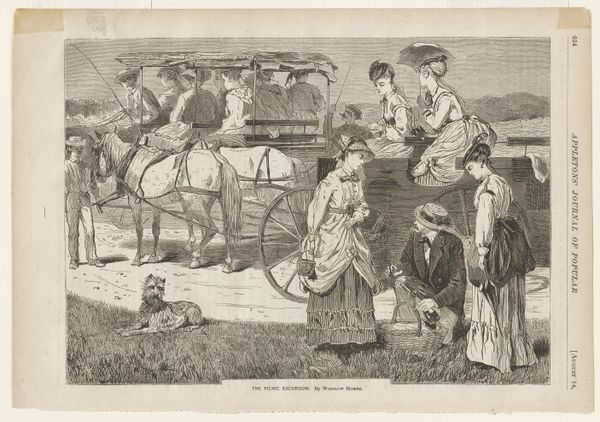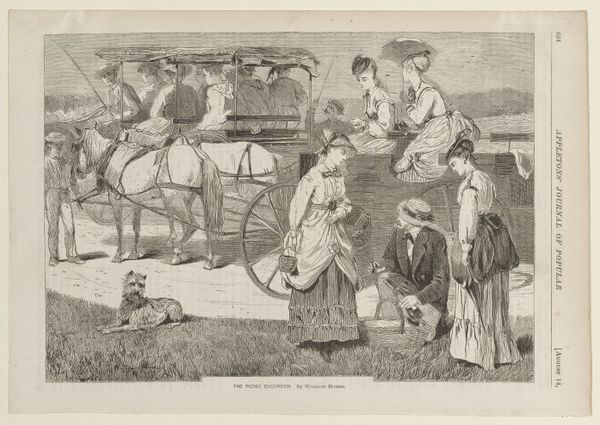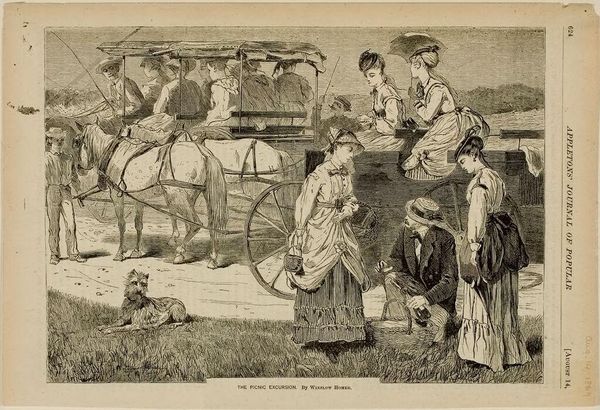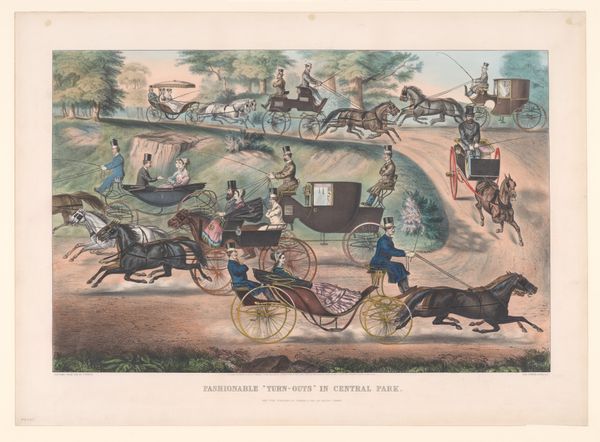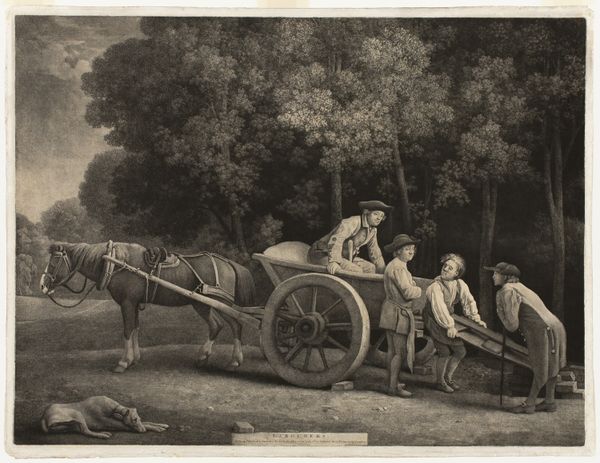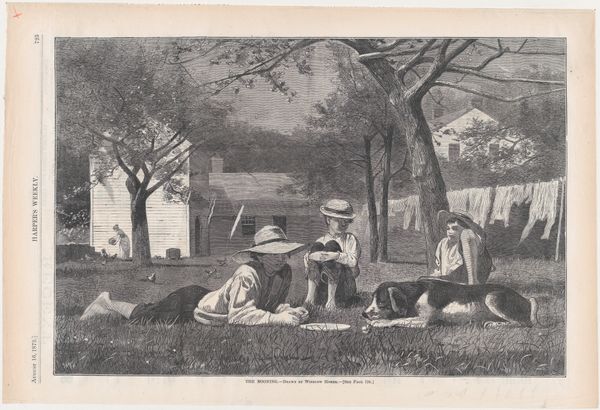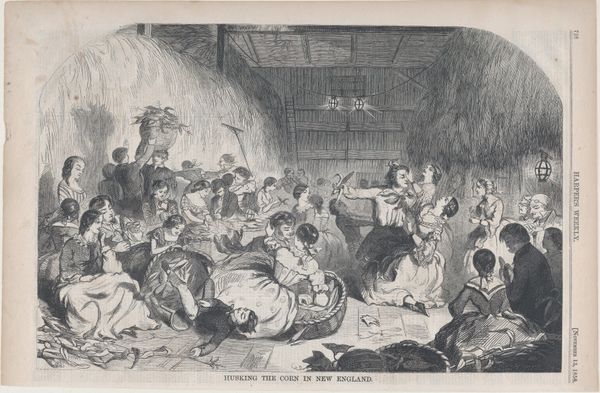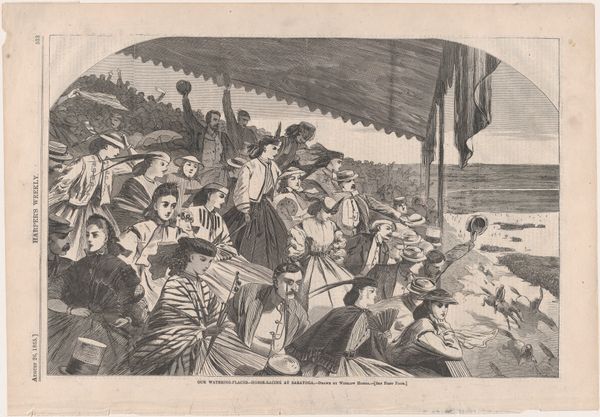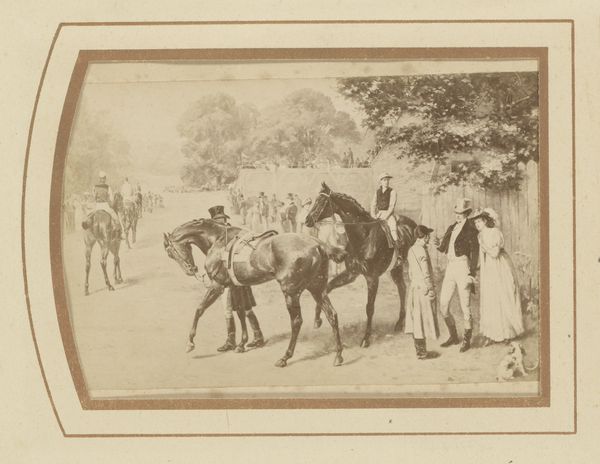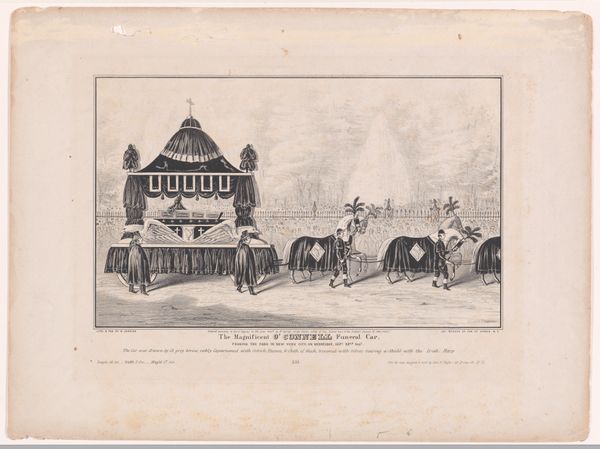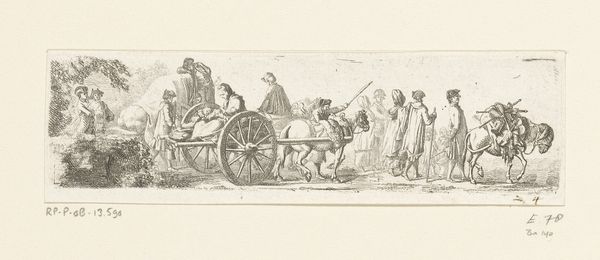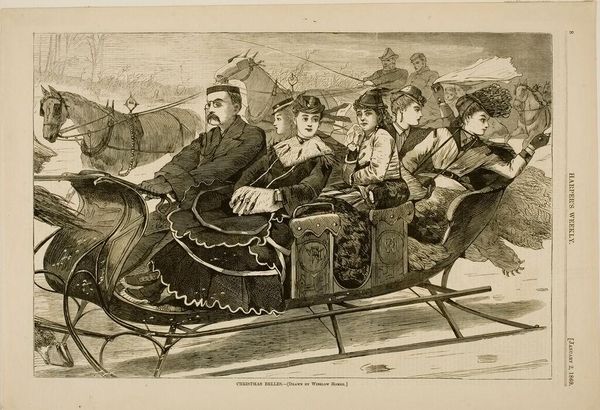
The Picnic Excursion (from "Appleton's Journal," Vol. I) 1869
0:00
0:00
drawing, print
#
drawing
#
16_19th-century
# print
#
impressionism
#
genre-painting
Dimensions: image: 6 1/2 x 9 1/8 in. (16.5 x 23.2 cm) sheet: 7 11/16 x 11 in. (19.5 x 28 cm)
Copyright: Public Domain
Curator: Winslow Homer's print, "The Picnic Excursion," from 1869 offers us a fascinating glimpse into post-Civil War leisure culture. Editor: My eye is immediately drawn to the texture. Look at the meticulously rendered lines of those dresses, the horse’s mane—it's incredibly detailed for a print, almost vibrating with activity. Curator: Absolutely. This image appeared in "Appleton's Journal," a widely circulated periodical, revealing the rising popularity of outdoor leisure activities among the middle class. Picnics became symbolic of social mobility and a yearning for simpler times amid rapid industrialization. Editor: The composition also speaks volumes. The artist segments space into planes – the horse-drawn wagon loaded with passengers in the background, the standing ladies, and the squatting couple attended to by a small dog are set across the visual field – a sort of visual hierarchy of bourgeois life? Curator: Precisely. Homer captured this rise in leisure activities after the Civil War by frequently including women in his genre paintings, showing that societal hierarchies had shifted to acknowledge gender roles. And indeed class! Notice the figures dressed in elaborate ensembles disembarking from their ornate carriages in a marked fashion that displays both cultural standing and taste. Editor: There's a certain reserve present too. These aren't joyous expressions we are privy to; rather, there are closed-off glances, creating a palpable sense of distance between the viewer and the viewed. Curator: That’s typical of Homer’s approach; rather than overtly romanticizing or critiquing society, he simply presented it as he observed it. He captured the ethos, showing these subtle class nuances. Editor: This allows us to really think about the societal implications embedded within the aesthetic presentation. Winslow Homer captured the mood, didn't he? The very human, fleeting impressions of life within visual parameters... Curator: Agreed, viewing his works are an invitation to explore and understand not just what they show but what that moment represents about American culture.
Comments
No comments
Be the first to comment and join the conversation on the ultimate creative platform.
